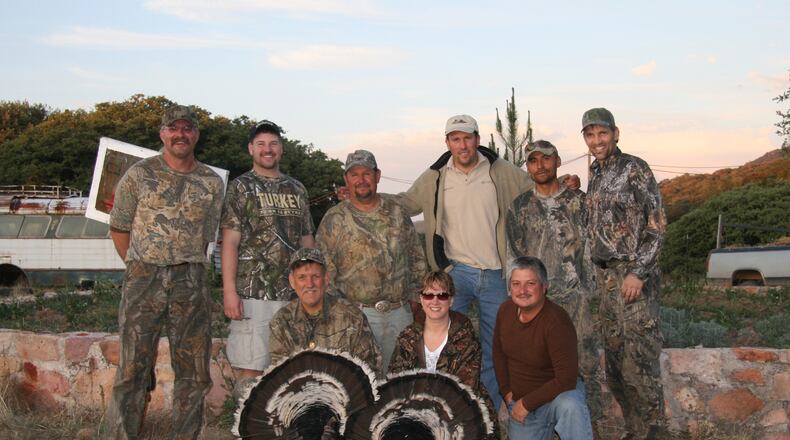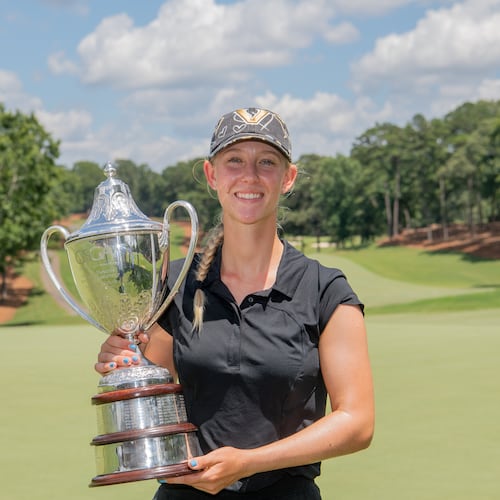Dawn came clear and cold recently in the Black River valley. Tender, new leaves of red oak and shagbark hickory shriveled under a coat of frost.
But the conditions didn't deter the wild turkeys. Gobbles erupted every five minutes from ridgeside roosts between the river and a spot known as Green Acres.
It was Sunday of the fifth period of the 2016 Wisconsin spring turkey hunting season.
I didn't carry a gun. I had no intent to kill.
I was looking for signs, searching for answers.
Why? How?
This Sunday service would be held in the outdoor cathedral to commune with a departed friend.
I met Gary Green in 1991 in Racine, where he worked as a firefighter and was a husband to Linda and father of four, Kristen, Caitlin, Carolyn and Kevin.
Our initial link was turkey hunting, which at the time was becoming a passion for both of us. Gary served as chairman of the Root River Longbeards, the local National Wild Turkey Federation chapter to which I belonged.
I got to know Gary well by working with him on the annual fundraising banquet, as well as writing articles about JAKES (Juniors Acquiring Knowledge Ethics and Sportsmanship) and other events he helped run.
Gary had an "optimism bias." Everything, he said often, would be all right.
Banquet planning meetings at the Green residence were casual affairs that typically extended into tours of his workshop and a review of his latest taxidermy projects.
He was _ and their home atmosphere demonstrated _ a welcoming, gregarious man who genuinely cared for people.
___
For a portion of his career at the Racine Fire Department, he served as Firefighter Gary and presented safety programs in area schools.
Approachable, smart and kind, he was exactly the person you wanted communicating with your kids.
Gary also did fire scene investigations and worked at fire houses.
He retired from the department with the rank of captain in 2009.
It was then he and Linda made the move to the hilly western portion of Jackson County.
Their children were grown and Gary had always wanted to own a little piece of heaven. They found it in North Bend, just a short jog up a ridge from the Black River.
The house needed work, but the 12-acre property had deer and turkey and squirrels. They had room for a big garden, and the house would accommodate his mother, Genevieve Midge Anderson.
He dubbed the property "Green Acres."
___
In May 2010 our addiction to the gobble led Gary and me and a group of friends to the Sierra Madre Mountains near Zacatecas, Mexico, to hunt the Gould's subspecies of wild turkeys.
We were joined by Howard Wohlgefardt of Yorkville and Shawn Dickey (former National Wild Turkey Federation regional director in Wisconsin) and his wife, Renee O'Brokta, both of Brook Park, Ohio.
Our party was plunged into a 19th-century time warp of remote ranches without electricity and gauchos on horseback.
The scenery, hunting and experience made memories for our lifetimes. Four of us tagged mature toms by the last afternoon of the hunt.
But Gary was still without a bird.
When he returned to camp late on the last day of hunting, we anxiously gathered around him. Gary looked crestfallen. He produced a damaged shotgun shell from his pocket and poured out a stream of pellets.
"It malfunctioned," Gary said with a straight face.
The group blurted out questions, demanded details. He just shook his head and let the disappointment sink in. Then he turned his back and walked to the pickup truck where he reached beneath a blanket and pulled out a very large Gould's gobbler.
He got his bird. And he got us.
___
Green quickly immersed himself in his new rural community.
He joined the North American Squirrel Association and volunteered at the group's field trips to help elderly and disabled enjoy the outdoors.
He became a member of Wine Sitters Fermented Friends.
He started keeping bees and assembled a menagerie of chickens and goats.
And he continued to express his talents in taxidermy, wildlife art and woodcarving. He even tried raising ring-necked pheasants and releasing them in a local effort to boost the population.
Life was good for Gary and Linda in 2015. They enjoyed two vacations and had frequent visits from their children and grandchildren, who all lived between La Crosse and Minneapolis. In December they celebrated the wedding of their son, Kevin.
Gary volunteered often, helping an elderly couple down the road who were battling health and independence issues. A trip to the doctor with one of his neighbors often took an entire day.
But this was Gary being Gary.
In his words, the key to life was: Be humble, kind and do what is right no matter what. Plant seeds of kindness. Pay it forward and live life proud of the time you have.
As fall turned to winter, he still was helping his neighbors as he battled a persistent cough and felt unusually tired.
In February, Gary had an X-ray with suspicious results. A review by a radiologist led quickly to a CT scan of his chest. On Feb. 16, Gary learned he had stage 4 metastatic lung cancer.
Gary had never smoked. Had chemical vapors or smoke inhaled from his days on the fire department caused the cancer?
No one will ever know.
Lung cancer is the leading cancer killer in both men and women in the U.S., according to the American Lung Association. In 1987, it surpassed breast cancer to become the leading cause of cancer deaths in women.
An estimated 158,040 Americans were expected to die from lung cancer in 2015, accounting for approximately 27 percent of all cancer deaths. The number of deaths caused by lung cancer has increased approximately 3.5 percent between 1999 and 2012.
The five-year survival rate for lung cancer is 54 percent for cases detected when the disease is still localized (within the lungs). However, only 15 percent of lung cancer cases are diagnosed at an early stage. For distant tumors (spread to other organs) the five-year survival rate is only 4 percent.
___
Though presented with excellent medical care, including that provided by his daughter Kristen, a physician, Gary had his legs cut out from under him by cancer.
Tumors were found in his brain and abdomen as well as his lungs.
February and early March were a blur of doctors appointments, hospital stays and treatments.
Gary still had enough optimism that he bought some leftover spring turkey permits for April and May.
But on March 24, the hope was gone. The next day Gary was brought home for hospice. To honor his service, the Galesville Fire Department came to help the ambulance drivers get him in the house.
Gary's bed was positioned in the living room with a view down the driveway and into the adjacent woods.
Linda said they spent the day sitting with him, occasionally seeing a glimpse of his old self as he had some lucid moments, and cracked a joke. Some friends came to say goodbye.
"It was so surreal," Linda said. "I kept waiting for Gary to sit up and say, OK enough of this, let's get busy on the garden or something."
Instead, their pastor came and commended him to God.
Gary died the next day, March 26, at 3:33 p.m. He was in Linda's arms, surrounded by his four children, several grandchildren, his mother and sister and friends.
In slightly more than five weeks from diagnosis, cancer had claimed him. He was 61 years old.
As the family sat with Gary, Phil the Pheasant paid a visit in the yard, as did a wild turkey and a pileated woodpecker.
"Pick up your hammers, people," wrote Gary's daughter Kristen on her Facebook page. "It's time to carry on the good work started by this selfless man."
___
Gary left behind an impressive collection of turkey mounts, including at least one of each subspecies of wild turkey as well as the ocellated turkey found in Mexico and Central America.
Howard Wohlgefardt had a vision for those mounts. In keeping with Gary's tenet of "planting seeds," Howard wanted to share Gary's mounts with the public.
He and Gary's son, Kevin, are designing and customizing a trailer to house the taxidermy display so it can be used at outdoor events and sports shows.
___
There's no guaranteed playbook for dealing with the loss of a friend or family member.
In Gary's case, we're fortunate: He gave us a sterling example of how to live.
For my part, I was compelled to visit his woods. I sat through the frosty dawn, watched the sunrise and listened to the gobblers. For more than an hour, I just soaked in the sights and sounds.
Phil the Pheasant came by, crowing and flapping his wings. The jack-in-the-pulpit plants straightened as the warm rays of sun reached the forest floor.
By 8 a.m. I felt heartened. A sit at Green Acres thinking about my old friend reminded me of the nature of our existence. We are all destined to join the dust.
But our spirit, our goodwill, our teachings, can endure. As shown by the life of a humble firefighter, how we live does matter.
A spring morning in a sacred, natural place helped me remember.
Thanks, Gary.
About the Author
Keep Reading
The Latest
Featured


